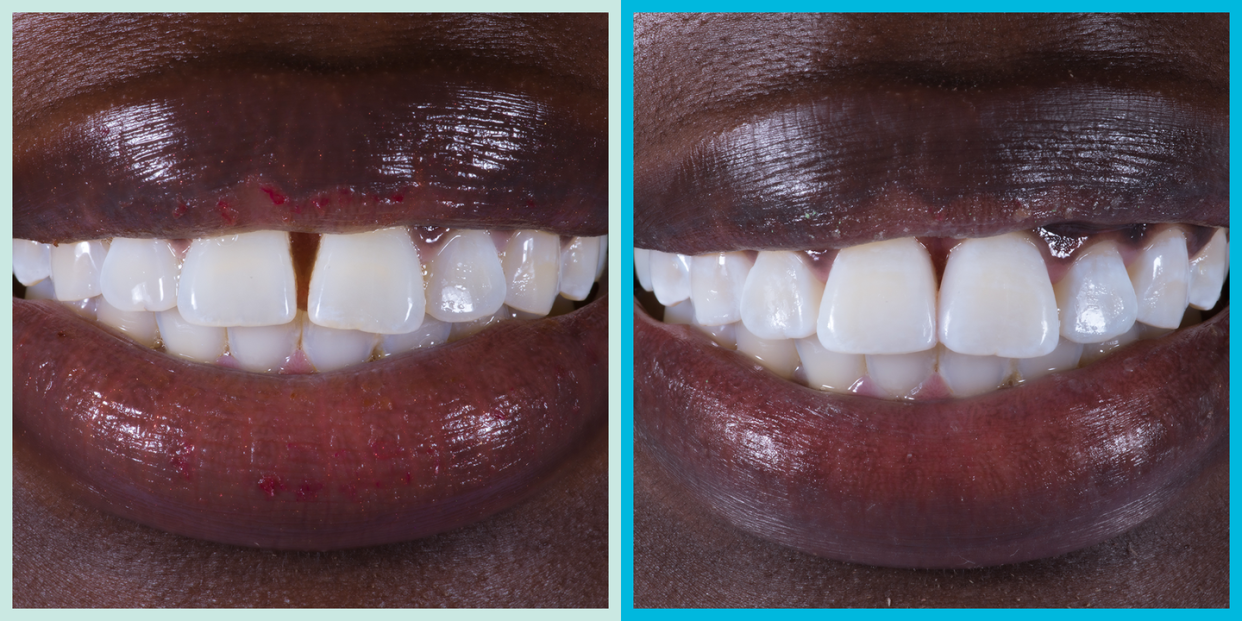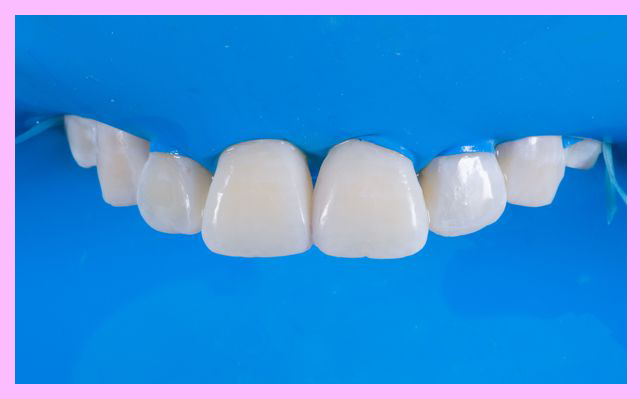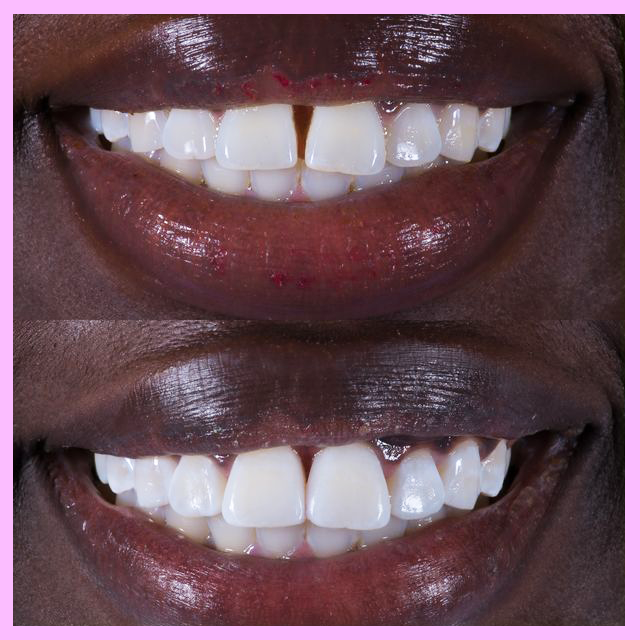How I Closed the Gap in My Teeth in One Afternoon

Like most people out there, I had braces for the better part of my teen years. I hated them, but they got the job done—they straightened everything up and closed the gap that I had in the center of my two front teeth. Skip forward a few years, and my teeth still look good. Even though I wasn't wearing my retainer (I know! But it was uncomfortable!), I had those thin wires glued to the backs of my teeth that were keeping everything in place.
That is, until the wire behind my top teeth snapped after I bit into an apple in college. Aaaand I never got it fixed (!!). While my teeth stayed fairly straight at first, my nonexistent gap slowly started to growing bigger and bigger over the years. I know most people didn't notice it, and I know there's absolutely nothing wrong with having a gap in your teeth (Madonna! Uzo Aduba! Brigitte Bardot! Beautiful!), but I couldn’t help but fixate on it every time I smiled. It eventually became a huge insecurity of mine, and it got to the point where I would refuse to smile in photos because I just didn’t like how it looked.
After complaining about my gap to a friend a few months ago, she connected me with Dr. Matt Nejad, an expert cosmetic and biomimetic dentist based in Beverly Hills. After video chatting with Dr. Nejad and explaining my situation, he told me that he would be able to close my gap for me in one day, using a method called biomimetic dentistry (more on that below). Didn't fully know what he was talking about, but he had me at “one day." So after another consultation, I decided to book a flight to LA to go and see him. Yes, really.
What is biomimetic dentistry?
A post shared by Dr. Matt Nejad (@dr_mattnejad) on Jan 23, 2020 at 8:00am PST
First of all, biomimetic dentistry isn’t a specific method, or even a specific technique. It’s more of an approach to dentistry that centers around the idea that your natural teeth were created perfectly—kinda like you, amiright—so they’re well designed and engineered to succeed. That means the dental procedures are more about working with what you've been given, versus approaching your teeth with traditional techniques that can be more invasive and destructive. Tl;dr: The biomimetic approach works with your teeth, not against them.
Are there people who aren’t good candidates for the biomimetic method?
Nope—everyone’s a good candidate, says Dr. Nejad. Unless you’re missing all of your teeth, which means you probably have bigger things to deal with and figure out. But even then, some aspects of the biomimetic approach can help you out.
How exactly is the biomimetic method used to close a gap?
I walked in the morning of the procedure and Dr. Nejad told me that we’d be using the "bonding method" to close my gap. It’s the preferred biomimetic method because it’s a conservative approach, meaning it doesn’t require the removal of any healthy tooth structure. The first step? Making a mold of my mouth, which Dr. Nejad then used as clone for test runs. After closing the gap on the mold, Dr. Nejad used it as a step-by-step guide for my actual teeth. But, first, my teeth were cleaned and then isolated with a rubber dam (to keep my gums protected and my teeth dry during the procedure).

Once the rubber dam was in, my teeth were coated with an adhesive and cured with a light. Then, he added the bonding piece by piece, using a brush to smooth out the material until it was blended perfectly with my teeth. Finally, Dr. Nejad finished by refining and polishing the bonding, then checking and adjusting my bite to make sure everything felt right.
TBH, I normally don't enjoy going to the dentist (I don't like getting shamed for not flossing!), but Dr. Nejad made sure the process went super smoothly. The only relatively uncomfortable part was having my mouth open for an hour and a half. But I couldn't have been happier with the results. Looking in the mirror afterwards was unreal—the gap was gone and the bonding materials were invisible; it was as if my teeth had always looked this way. I legit couldn't stop looking at my new teeth for days after, and I bombarded my group chats with selfies. Truly the best thing ever.

How long does the process take? And how long do the results last?
Everything got done in one day—seriously. It took a few hours to make the mold, and then a little over an hour to apply the bonding to my teeth. Dr. Nejad has a TV on his ceiling (casual), so I just laid back and watched a couple episodes of The Politician. My gap will stay closed forever, but it really depends on the patient and the reason the gap exists in the first place. But if you’re worried about maintaining your results, you can get a night guard to help keep your teeth from shifting, says Dr. Nejad.
How much does the process cost?
A post shared by Dr. Matt Nejad (@dr_mattnejad) on Jan 4, 2020 at 9:28am PST
Brace yourself: It can cost up to $1,750 per tooth. A procedure like mine wouldn't be covered by insurance because it's considered a cosmetic procedure. But, if it's something that's really important to you, it's def worth saving up for, IMO. Keep in mind that you'll also need to consider touch-up appointments. Dr. Nejad likes to follow up with his patients two weeks after the procedure to see how everything looks and to make sure nothing’s irritated. After that, you can have your additions re-polished every three to five years, but it really depends on the patient (some people don’t need this at all).
Is there any downtime after the procedure?
Not really! I went to dinner that night and lived my life. The only thing I really had to get used to was the feeling of not having a gap anymore. It was strange for a few days, but it quickly became my new normal.
Is it worth it?
For me, it was 100 percent worth it. Like I said, most people didn't even realize that I had a gap to begin with, but I wasn't doing it for them. Getting the procedure done has made such a difference, not only in my smile, but in my confidence.
You Might Also Like

